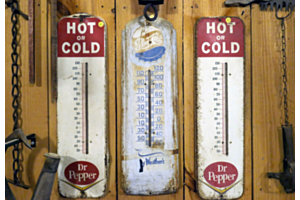How Do You Keep Mold Out of a Mini Split?

Although ductless mini splits are different from ducted HVAC systems in almost every way, they do share one thing in common. They can both develop mold.
When we say develop mold, by the way, we don’t mean a thin layer of fungi on the exterior of the outdoor compressor. Oh no. It’s more like chunks of mold, and huge chunks at that.
It’s nothing you want to see, let alone breathe in, and the last thing you want is this mold anywhere near your home.
How do you get rid of unwanted mold and keep it out so you don’t have to worry about the quality of the air your family breathes in each day?
It’s easier than you think! Here’s what we recommend.
Keep Your Mini Split Maintained
This is something you don’t even have to do yourself. Rather, call a professional mini split technician to your home several times per year to open up the outdoor compressor and give it a thorough cleaning.
Besides keeping your mini split system free from mold, you can also rest assured that your mini split will be in impeccable condition. Maintenance keeps the mini split running well for years to come, and its lifespan might be longer than average too!
Let Your Mini Split Run
You’re probably used to turning on your air conditioner or heater and letting it run continuously until the house feels comfortable, right? Then you turn it off.
A ductless mini split system doesn’t cycle through the same way. Yet some homeowners still turn the mini split off after their house feels comfortable enough, mostly because old habits die hard.
This isn’t the best thing you could do for your mini split in both the short-term and long-term. While it’s not running, the mini split drains excess moisture. Or it was doing that before you turned it off.
Now the mini split retains the moisture. If you weren’t familiar, all it takes for mold to grow is a dark, wet environment, which is exactly what the mold has in your mini split.
What you should do instead is allow the mini split system to run on low power mode. It will switch to this mode automatically after the temperature reaches the point you set the thermostat to.
If the mini split was in the process of draining water, it can continue doing so when it’s in low power mode. This prevents the accumulation of standing water and ensures you don’t have to see mold chunks coming out of your mini split.
Plus, you won’t have to smell the odor of mold, which homeowners have described as rotten cheese or dirty gym socks. Lucky you!
Use a Mold Control Product
While we’d recommend asking your technician before you start spraying, most mold control products should be usable on your ductless mini split system.
Read the product instructions and apply the stuff as frequently as necessary. You shouldn’t see any mold come back.






